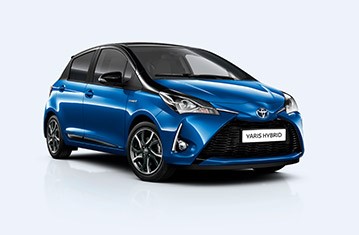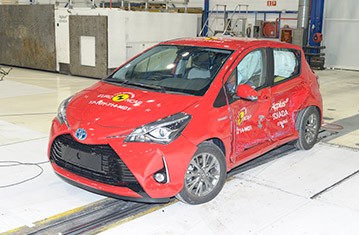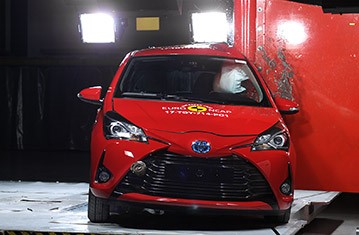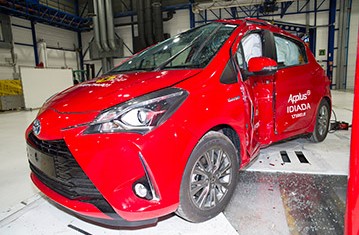- With standard equipment
- With safety pack
Find more information in the General Comments section of the assessment
Find more information in the Rating Validity tab of the assessment
- See More
- See More
- See More
- See More
- Good
- Adequate
- Marginal
- Weak
- Poor
 Passenger
Passenger
 Driver
Driver
 Rear Passenger
Rear Passenger
 Driver
Driver
 Car
Car
 Pole
Pole
 Rear Seat
Rear Seat
 Front Seat
Front Seat
- Good
- Adequate
- Marginal
- Weak
- Poor


Passenger
outboard
center
Fitted to the vehicle as standard
Not fitted to the test vehicle but available as option
Not Available
-
i-Size CRS
-
ISOFIX CRS
-
Universal Belted CRS
Easy
Difficult
Safety critical
Not allowed
| Seat Position | ||||
|---|---|---|---|---|
| Front | 2nd row | |||
| Passenger | Left | center | Right | |
| Maxi Cosi 2way Pearl & 2wayFix (rearward) (iSize) | ||||
| Maxi Cosi 2way Pearl & 2wayFix (forward) (iSize) | ||||
| BeSafe iZi Kid X2 i-Size (iSize) | ||||
| Maxi Cosi Cabriofix & FamilyFix (ISOFIX) | ||||
| BeSafe iZi Kid X4 ISOfix (ISOFIX) | ||||
| Britax Römer Duo Plus (ISOFIX) | ||||
| Britax Römer KidFix XP (ISOFIX) | ||||
| Maxi Cosi Cabriofix (Belt) | ||||
| Maxi Cosi Cabriofix & EasyBase2 (Belt) | ||||
| Britax Römer King II LS (Belt) | ||||
| Britax Römer KidFix XP (Belt) | ||||
Easy
Difficult
Safety critical
Not allowed
In the frontal offset test, protection of both child dummies was good or adequate. In the side barrier test, the curtain airbag did not cover the area needed to provide protection for the head of the 10 year dummy, sat on the struck side. The head contacted the interior trim and recorded deceleration which demonstrated marginal protection for this critical body area. Protection of other critical body areas was good for both child dummies. The front passenger airbag can be disabled to allow a rearward-facing child restraint to be used in that seating position. Clear information is provided to the driver regarding the status of the airbag and the system was rewarded. Installation of the rearward-facing Group 0+ universal restraint in the rear centre seating position was not possible owing to insufficient length of webbing to pass around the shell and buckle the belt. Otherwise, restraints could be properly installed and accommodated in the car.
- Good
- Adequate
- Marginal
- Weak
- Poor

Head Impact 16.7 Pts
Pelvis Impact 4.0 Pts
Leg Impact 6.0 Pts
The protection provided to the head of a struck pedestrian was predominantly good or adequate, with poor results recorded on the stiff windscreen pillars. The protection offered to pedestrians' legs was good in all areas tested while that offered to the pelvis was good in some areas and weak in others. The autonomous emergency braking system detects other vehicles but cannot detect vulnerable road users such as pedestrians or cyclists.
- Good
- Adequate
- Marginal
- Weak
- Poor
| Applies To | All seats | ||
| Warning | Driver Seat | Front Passenger(s) | Rear Passenger(s) |
| Visual | |||
| Audible | |||
|
|||
| System Name | Lane departure Alert as part of Toyota Safety Sense |
| Type | Lane Departure Warning |
| Operational From | 50 km/h |
| Warning | Audible |
| Performance | |
|
LDW Confirmation Test
|
Pass |
| System Name | Pre-collision System as part of Toyota Safety Sense | |||
| Type | Forward Collision Warning with Auto-Brake | |||
| Operational From | 10 km/h | |||
| Additional Information | Default On | |||
| Performance | | ||||
| Autobrake Function Only | Driver reacts to warning | |||
| Operational Speed | 10-80 km/h | 15-140 km/h | ||
| Approaching a stationary car | See AEB City | Crash avoided up to 60km/h.Crash speed reduced up to 65km/h. | ||
| Approaching a slower moving car | Crash avoided up to 70km/h. | Crash avoided up to 80km/h. | ||
| Following a car at short distance | ||||
| Car in front brakes gently | Avoidance | Avoidance | ||
| Car in front brakes harshly | Mitigation | Mitigation | ||
| Following a car at long distance | ||||
| Car in front brakes gently | Avoidance | Avoidance | ||
| Car in front brakes harshly | Mitigation | Mitigation | ||
The Yaris has a seatbelt reminder for the front and rear seats. The standard-fit autonomous emergency braking system performed well in tests at highway speeds, with collisions avoided or mitigated in most scenarios. A lane departure warning system is also standard equipment on the Yaris.
- Specifications
- Safety Equipment
- Videos
- Rating Validity
Specifications
Tested Model Toyota Yaris Hybrid
Body Type - 5 door hatchback
Year Of Publication 2017
Kerb Weight 1155kg
VIN From Which Rating Applies -
Class City and Supermini
Safety Equipment
Note: Other equipment may be available on the vehicle but was not considered in the test year.
Fitted to the vehicle as standard
Fitted to the vehicle as part of the safety pack
Not fitted to the test vehicle but available as option or as part of the safety pack
Not available
Not applicable
Videos
Rating Validity
Variants of Model Range
| Body Type | Engine & Transmission | Drivetrain | Rating Applies | |
|---|---|---|---|---|
| LHD | RHD | |||
| 3 door hatchback | 1.0 petrol | 4 x 2 |  |
 |
| 3 door hatchback | 1.5 petrol | 4 x 2 |  |
 |
| 3 door hatchback | 1.4 diesel | 4 x 2 |  |
 |
| 5 door hatchback | 1.0 petrol | 4 x 2 |  |
 |
| 5 door hatchback | 1.5 petrol | 4 x 2 |  |
 |
| 5 door hatchback | 1.4 diesel | 4 x 2 |  |
 |
| 5 door hatchback | 1.5 petrol hybrid* | 4 x 2 |  |
 |
* Tested variant

Find more information in the General Comments section of the assessment
 Share
Share












The passenger compartment of the Yaris remained stable in the frontal offset test. Dummy readings indicated good protection of the knees and femurs of the driver and passenger. However, structures in the dashboard were thought to present a risk to occupants of different sizes and to those sat in different positions, and protection of this body region was rated as marginal. Protection of the driver's chest was also rated as marginal, based on dummy readings of chest compression. In the full-width rigid barrier test, protection of the driver was good or adequate. However, the pelvis of the rear passenger dummy slipped under the lap section of the seatbelt and protection of the pelvis was rated as poor. In addition, the head moved further forward in the impact than recommended and its protection was rated as marginal even though dummy injury values were not excessive. In the side barrier test, protection of all critical body areas was good and the Yaris scored maximum points. However, in the more severe side pole test, dummy readings indicated marginal protection of the chest and abdomen. Tests on the front seats and head restraints demonstrated good protection against whiplash injury in the event of a rear-end collision. A geometric assessment of the rear seats also indicated good whiplash protection. The Yaris has, as standard, an autonomous emergency braking system. In tests of its functionality at the low speeds at which many whiplash injuries occur, the system demonstrated good performance, with collisions avoided or mitigated at all test speeds.